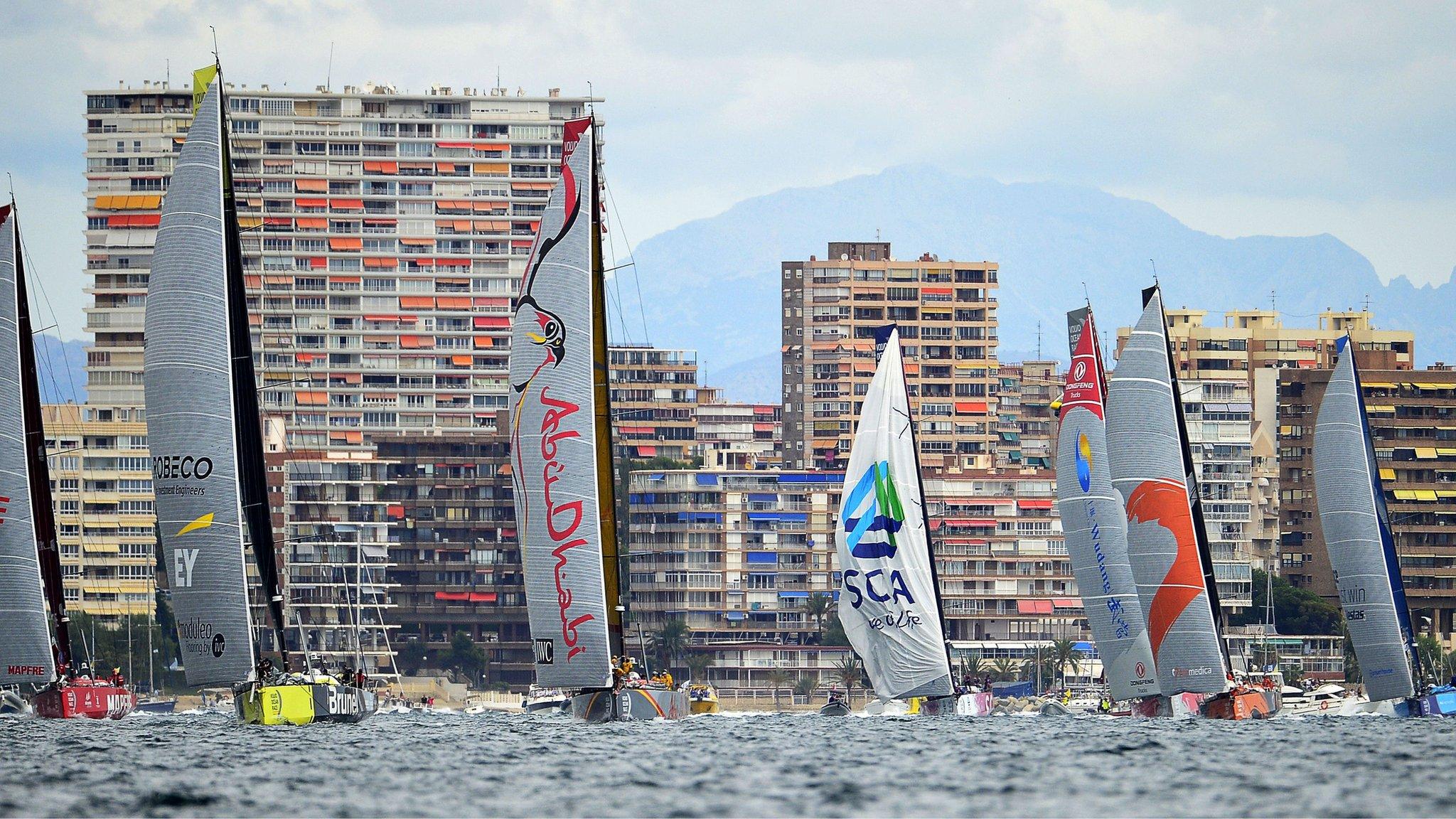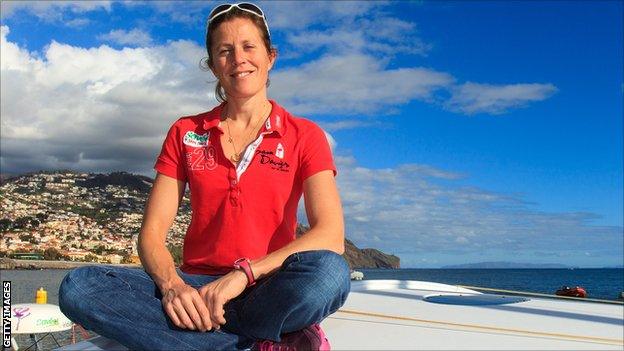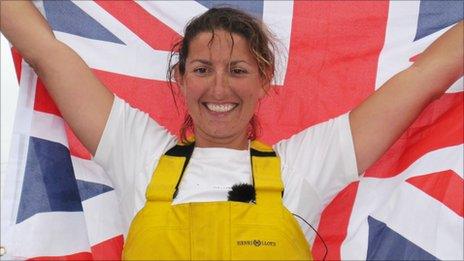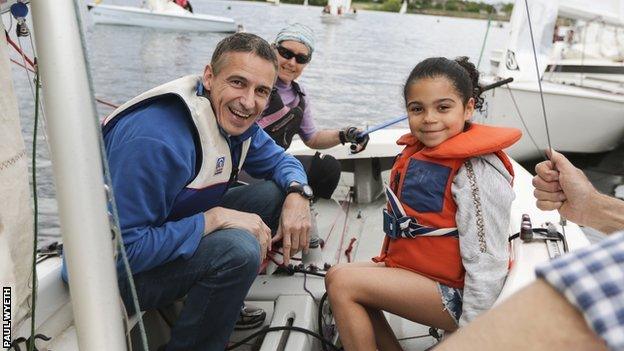Volvo Ocean Race: Iceberg warning as fleet nears Cape Town
- Published

Abu Dhabi Ocean Race moved into the Volvo Ocean Race lead on Saturday
An ice exclusion zone has been introduced to the Volvo Ocean Race after a 300-metre-long iceberg was spotted by organisers.
The fleet of seven teams is nearing the end of the first leg from Alicante, Spain, to Cape Town, South Africa.
"Icebergs are the one thing that sailors are most afraid of," said Mark Covell, part of the race control team.
Abu Dhabi Ocean Race, skippered by Briton Ian Walker, was leading by just 17 nautical miles on Saturday.
All of the fleet are sailing in a one-design Volvo Ocean 65 boat, built for durability rather than speed. The opening stage has been the most closely contested in the event's history, with the early leaders and all-female Team SCA currently in last place.
Justin Slattery, part of the Abu Dhabi crew, said: "It doesn't take much to sink a boat like this."
The teams |
|---|
Team SCA, Sweden |
Abu Dhabi Ocean Racing, Abu Dhabi |
Dongfeng Race Team, China |
Team Brunel, Netherlands |
Team Alvimedica, US/Turkey |
MAPFRE, Spain |
Team Vestas Wind, Denmark |
There are 16 nationalities among the seven teams, with sailors from Australia, Belgium, China, Denmark, France, Ireland, Italy, Lithuania, Netherlands, New Zealand, Spain, Sweden, Switzerland, UAE, USA & UK. Other Britons involved are Team SCA's Dee Caffari, Abu Dhabi Ocean Racing's navigator Simon Fisher & MAPFRE's Sam Goodchild. |
Team SCA's British skipper Sam Davies said: "It's a racing environment, it's a pretty dangerous thing to come across, so I totally understand the decision and I think it's a very good idea."
The boats, which are due to arrive in Cape Town around 6 November after a 6,847-nautical-mile leg which started on 11 October, will face penalties if they cross into the exclusion zone.
The race visits 11 ports across every continent and will conclude in Gothenburg, Sweden on June 27,2015.
About the Volvo Ocean Race | |
|---|---|
The global event takes nine months to complete and covers almost 39,000 nautical miles | One nautical mile is equal to 1.15 land miles and is used for navigating and charting |
The event is regarded as crewed sailing's toughest test | The race was previously called the Whitbread Round the World Race |
- Published13 October 2014

- Published9 October 2013

- Published18 March 2014

- Published1 May 2018
